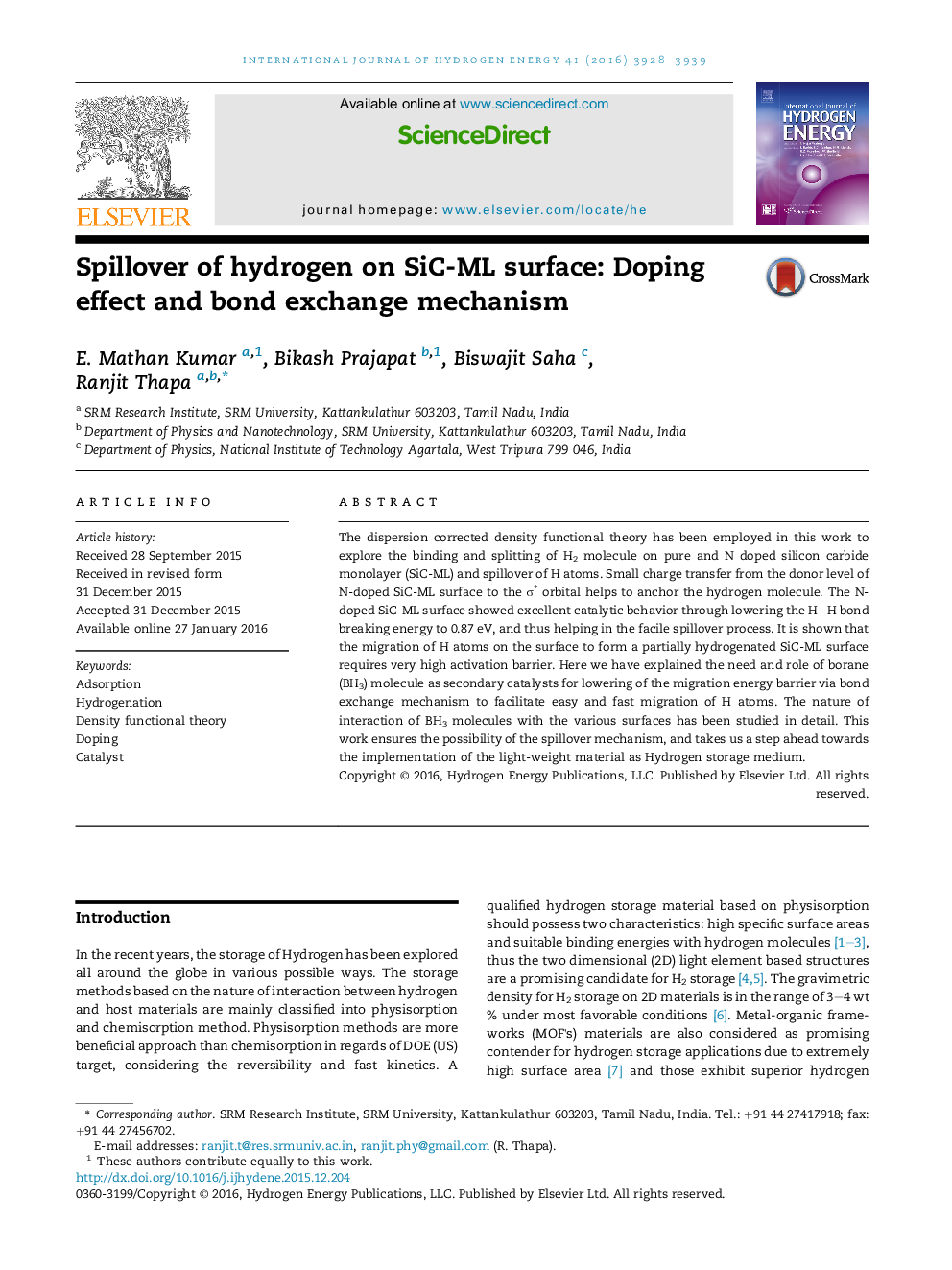| Article ID | Journal | Published Year | Pages | File Type |
|---|---|---|---|---|
| 1277922 | International Journal of Hydrogen Energy | 2016 | 12 Pages |
•H2 interaction with the various electron-doped surfaces.•Address the splitting of H2 and migration of hydrogen atom during Hydrogenation process.•Bond exchange spillover mechanism using external mediators.•Nature of bonding between BH3 with various surfaces.•electron-doped SiC surface act as self-catalyst to dissociate H2 with low energy barrier.
The dispersion corrected density functional theory has been employed in this work to explore the binding and splitting of H2 molecule on pure and N doped silicon carbide monolayer (SiC-ML) and spillover of H atoms. Small charge transfer from the donor level of N-doped SiC-ML surface to the σ∗ orbital helps to anchor the hydrogen molecule. The N-doped SiC-ML surface showed excellent catalytic behavior through lowering the H–H bond breaking energy to 0.87 eV, and thus helping in the facile spillover process. It is shown that the migration of H atoms on the surface to form a partially hydrogenated SiC-ML surface requires very high activation barrier. Here we have explained the need and role of borane (BH3) molecule as secondary catalysts for lowering of the migration energy barrier via bond exchange mechanism to facilitate easy and fast migration of H atoms. The nature of interaction of BH3 molecules with the various surfaces has been studied in detail. This work ensures the possibility of the spillover mechanism, and takes us a step ahead towards the implementation of the light-weight material as Hydrogen storage medium.
Graphical abstractFigure optionsDownload full-size imageDownload as PowerPoint slide
